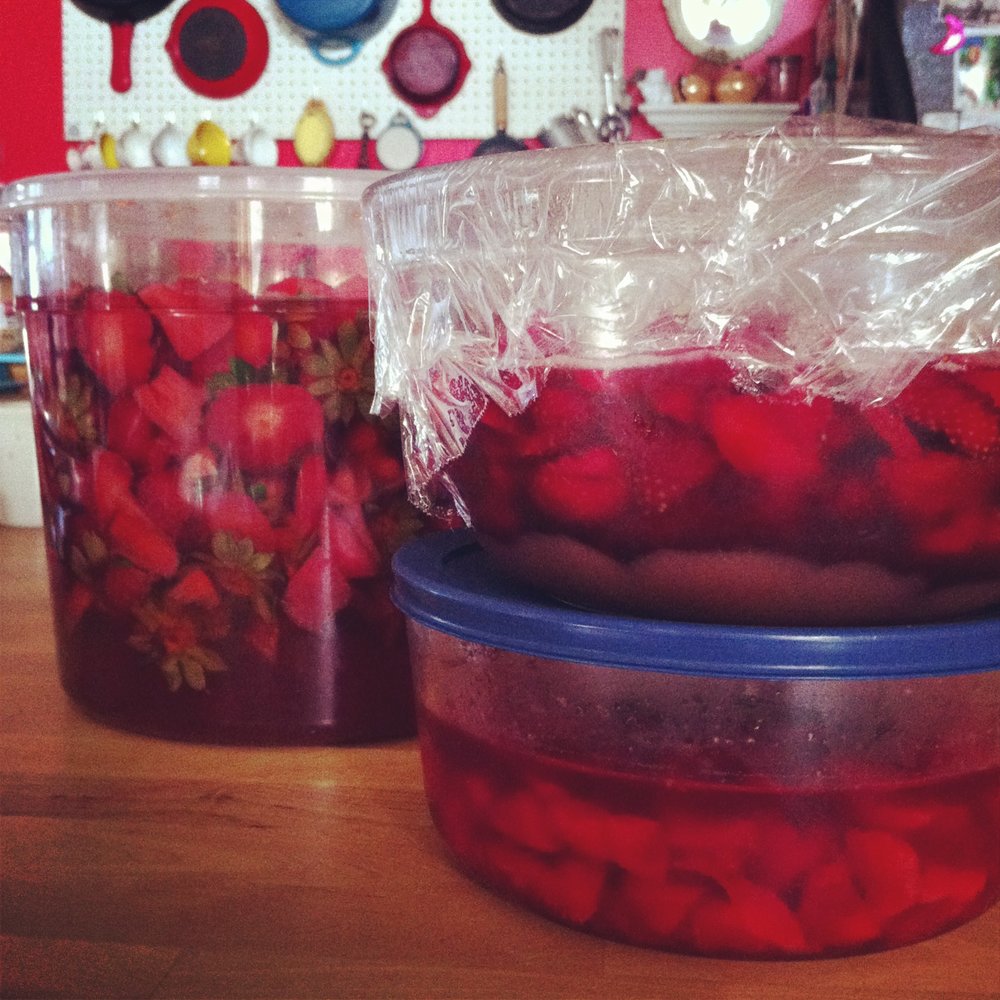I felt like my grandma last week when I purchased 8lbs of really ripe local strawberries from one of our local grocers, extra inventory that wasn’t moving fast enough (well, faster than the speed of fruit fermentation). I paid a third of what they were asking for the pristine version of the berries. I’m no stranger to ‘seconds’, but it really hit home how much can be saved from compost, or worse, trash.
Grandma Mannie (Bertha Burnham, in the book) told me stories of growing up in Michigan, the lean years when there wasn’t money for food so she and her (7 other) siblings would go fetch produce the grocery stores pitched; “Just cut off the bad part. The rest is perfectly fine.”
That’s just what I did. I cleaned and sorted and hulled and hulled and hulled. I separated true compost (the moldy ones) from the just mushy, the shrub-worthy from the creme de la creme, the jam berries. After all that, only 1lb was true compost, 1lb ended up simmered in white wine vinegar (to make a shrub), 2lbs made their way to the freezer for smoothies, 2lbs became jam and the mushy and leftover bits and pieces went into a 6-quart Cambro to become fermented strawberry scrap vinegar (which I’ll post soon, for now check out this recipe and just sub strawberries if you’re itching to ferment).
Food waste is a hot topic where I live, as it should be everywhere. I’m reading this book by Jonathan Bloom finding the stats quite staggering, like how America could fill up the Rose Bowl (the stadium in Pasadena) full of food waste every. single. day.
How are you making a dent in decreasing food waste?


